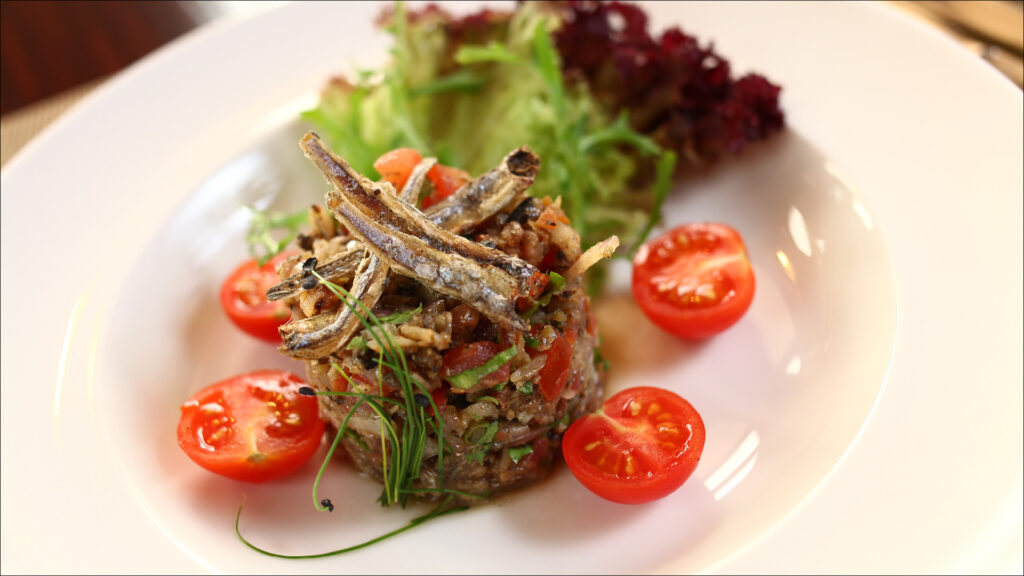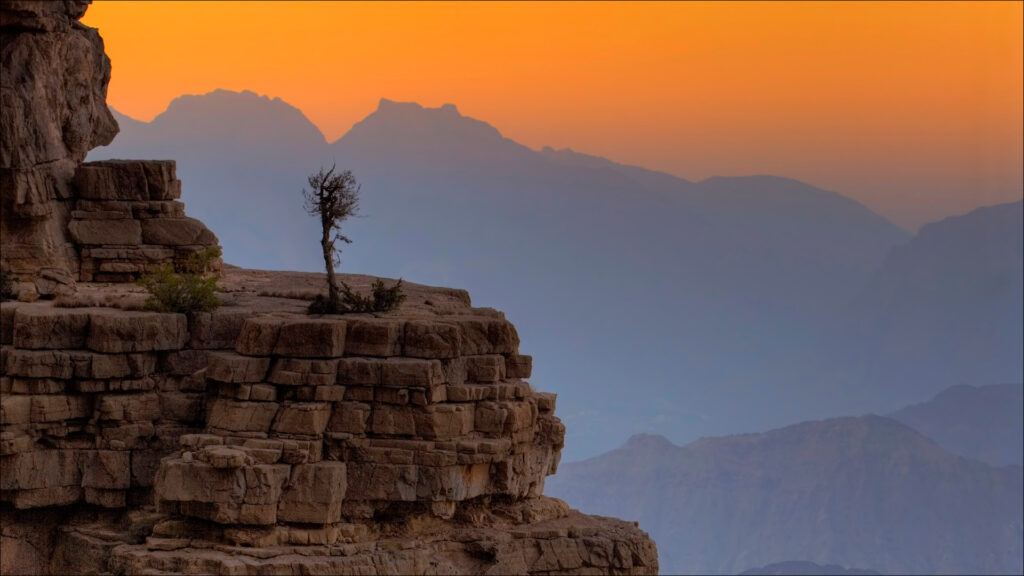With an old-world charm, thrilling outdoors, and cities steeped in history, Oman is a refreshing, picturesque wonder in the Middle East. Here are some reasons why it’s worth a visit—or two!
By ARZOO DINA
Oman is what you would call a hidden gem—unspoilt, rugged, and boasting a unique topography that offers much adventure. From the dry desert and the lush wadis, to its mesmerising date plantations, shimmering seas, and undulating mountains that stretch as far as the eye can see—the country’s versatility caters to every kind of traveller. These are the views I’m greeted by when I land in its capital, Muscat, on a warm autumn afternoon. And, as I would discover over the next few days, these vistas were precursors to the many charming surprises Oman had in store for me.
CAPITAL VIEWS

Fringed by the turquoise waters of the Arabian Sea and a stunning coastline, Muscat captivates with its delicate, Arabesque architecture, coupled with discreet but opulent hotels and resorts dotting the cityscape. Instead of soaring skyscrapers, I’m treated to views of low-lying buildings in shades of cream and beige, framed by the rugged Hajar Mountains. Nearby, incense-filled souks beckon with a dizzying array of pottery, ceramics, artefacts, and knick-knacks. The city feels like it’s suspended in time. As I drive past the harbour and Muttrah Corniche on my first evening in the city, locals are spilling out onto the promenade, dotted with restaurants, cafés, and the famous Muttrah Souq. Street vendors are busy dishing out popular fare such as mishkak (skewered meat), a staple filling for locals. Drawn in by the chaos and colours, I venture into the aforementioned souq, stopping to admire Moorish lamps strung together in shops, their bright colours glinting in the sunlight. The market is a winding maze of shops selling souvenirs, spices, silver, frankincense or luban (which Oman is renowned for), perfumes, clothes, antiques, and more.
MANY WONDERS

Muscat’s magical ambience extends to its architectural landmarks, as well. I’m awestruck by the strikingly beautiful, marble-clad Sultan Qaboos Grand Mosque. It’s said to be home to the world’s largest chandelier made with Swarovski crystal, and also houses a massive single-piece Persian carpet featuring 1,700 million knots and exquisite mosaic patterns in the main prayer hall.

The Royal Opera House is another ornate marvel featuring contemporary Omani architecture with a white marble facade.
The theatre is adorned in rich tones, with intricate detailing,
while the outdoor spaces are marked by landscaped gardens.
MARITIME MARVEL
Oman and the sea share an inextricable link. If you have the time, make a pit stop at the National Museum in Muscat, where you can learn all about the nation’s seafaring history. The exhibits are quite immersive and I spent a couple of hours learning about the country’s vast trading routes that once stretched up to China. Forts like Al Jalali and Al Mirani were built by the Portuguese and date back to the 15th century. These stand at the harbour of the city and you get an even clearer view of these by boat. But the delights of the sea don’t end there. Make sure to head on a speedboat tour to see dolphins, like I did. These usually begin at Marina Bandhar Al Rowdha. If you’re lucky, you may even spot a whale or two. The city’s sights really whet my appetite for grand meals and Muscat made sure I’m well fed!
DELICIOUS PLATES

I spend the next couple of days sampling indulgent, local fare. One of my most memorable meals was at Bait Al Luban, a fine dining restaurant for traditional and contemporary Omani fare. Breads like maldouf (a flaky date flatbread) and mandazi (a sweet, fluffy bread) are served with dishes such as shuwa (slow-cooked lamb in a fire pit), grills, and light shorbas (soups). Date cheesecake and luqaimat (dumplings of condensed milk soaked in honey, saffron, and date syrup) make for a sweet finish.

To top it all, the restaurant flaunts panoramic views of the Arabian Sea—the perfect accompaniment to my meal. Rozna, another upscale restaurant in Muscat, is extremely popular with the locals. Built along the lines of a fort, it makes for an authentic dining experience. I spend a pleasant evening sampling traditional Omani fare, beginning with date juice, grills, and platters, as well as a special Qabuli rice—a delicately-spiced dish that’s studded with meat, chicken, or fish and potatoes. Post-dinner, dates and qahwa (coffee) are served in a formal sit-down living area. Appetite satiated, I decide it’s time for some adventure. So, while you’re here, do as the locals do. Leave the city for a break in the mountains. It’s where the country comes alive.
THE GREAT OUTDOORS

The next day, I buckle up in a plush 4×4 vehicle, ready to start my adventure in the Hajar Mountains, home to the famous twin peaks of Jebel Akhdar and Jebel Shams. After driving on butter-smooth roads for over an hour, we take a detour to go off-roading—a lengthier route as compared to the expressway, but oh-so-worth it! As we traverse rough, pebbled paths, herds of mountain goats gaze at us passing by. The car kicks up dust as my guide expertly navigates hairpin bends and turns, as we cross sleepy Bedouin villages. Shy locals peek out from their mud-brick houses to wave at us every now and then.

We reach our destination and I’m overwhelmed as I take in Wadi Ghul, known as the ‘Grand Canyon of Oman’. Steep, jagged cliffs lead to jaw-dropping views of the canyon running 500 metres deep. I’m told nomadic tribes once lived here centuries ago. Oman, with its stunning outdoors, is a breath of fresh air. Despite my full itinerary, there is still more to explore!
A HEADY DOSE OF CULTURE

I leave the quiet solitude of the mountains behind, and head towards the city of Nizwa, once the ancient capital of Oman. My first stop is the expansive Nizwa Souq, sectioned into different markets. The fragrance of frankincense lures me into alleyways where shops are selling this by the kilo. Also on display is Omani halwa (a sweet jelly-like dessert), khanjars (traditional daggers), and jewellery. Further in is the spice market, where heaps of local spices, dried Omani lemons, saffron, and rose petals lie in colourful piles.

After purchasing a blend of spices, I can’t resist stopping by the open-air market selling terracotta earthenware or bahla pottery. This is one of the most picturesque spots in the souq. It’s the perfect end to my sensorial visit in Nizwa. As I wind my way back to Muscat, I think about the exhilarating few days I’ve spent exploring this country’s raw, unfiltered beauty and thrilling adventures. They’re two of the many reasons why Oman must be on the list of every traveller who wishes to explore more of the Middle East!
GETTING THERE
Vistara offers daily direct flights between Mumbai and Muscat.
Related: Deutsche Discovery



